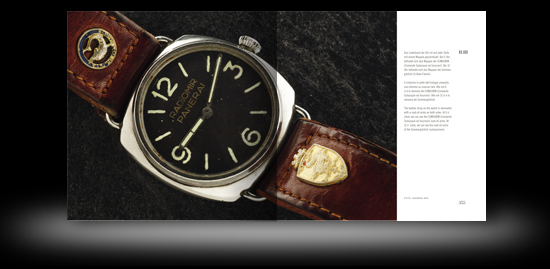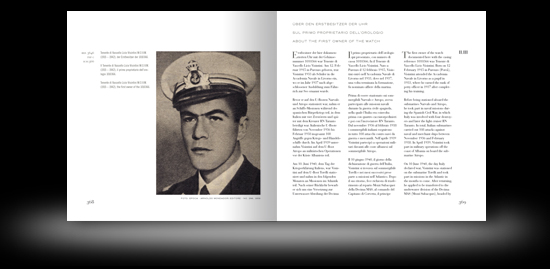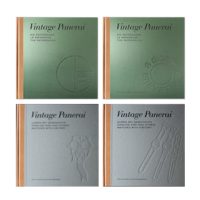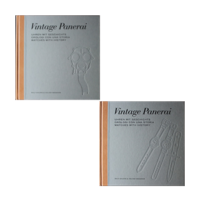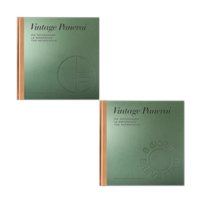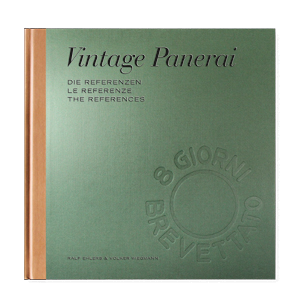Allgemein
Naval heritage – Licio Visintini’s Radiomir
by Volker on Jun.15, 2025, under Allgemein
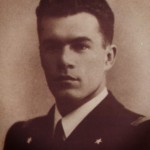 SLC pilot Tenente di Vascello Licio Visintini M.O.V.M. took part on several missions against the allied fleet in Gibraltar as a member of the Mezzi d’Assalto.
SLC pilot Tenente di Vascello Licio Visintini M.O.V.M. took part on several missions against the allied fleet in Gibraltar as a member of the Mezzi d’Assalto.
After returning from the SLC missions B.G.3, being pilot of SLC 160 in May 1941 and B.G.4, being pilot of SLC 220 in September 1941 (both carried out from the transport submersible “Scirè” under the command of Junio Valerio Borghese), Licio Visintini, twice awarded with the silver medal for galantry at war (M.A.V.M.), returned to Gibraltar undercover in June 1942. He built the core of the “Orsa Maggiore” on board the tanker Olterra – the new, hidden base for the SLC units in the bay of Gibraltar (which remained undiscovered until September 1943). Read more on the Olterra here.
After months of preparations and training in complete secrecy, the SLC mission B.G.5 took progress in December 1942 with three SLC devices of the 200-series: 228, 229 and 236. For Licio Visintini, Giovanni Magro and Salvatore Leone it was a missions with no return. Read the complete story about their fateful SLC mission and how Licio Visintini’s Ref. 3646 / Type C with “Radiomir Panerai” dial returned to Italy and changed ownership two times after, on page 368-397.
Page 354 – 355: Licio Visintini’s 3646 / Type C. The strap has been decorated with coat-of-arms of the Sommergibilisti (submariners) and COMSUBIN (Raggruppamento subacquei e incursori “Teseo Tesei”). The Rolex movement of the watch has been introduced here.
Page 368 – 369: About the first owner of the watch. Tenente di Vascello Licio Visintini M.O.V.M.
Page 386 – 387: Illustration of the secret SLC base Olterra at the pier in Algeciras / Bay of Gibraltar.
The watch of Tenente di Vascello Licio Visintini (1915 – 1942) and the history behind can be read in the book “The References” 1930’s-1940’s (chapter II.III, page 350 to 397). Read more on Licio Visintini here. Enjoy reading!
A look into our book “The References” 1930’s-1940’s
by Volker on May.25, 2025, under Allgemein

Page 70-71 – engraved caseback of a Ref. 3646 / Type A “Radiomir Panerai”.
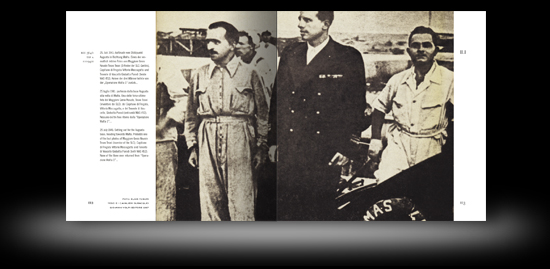
Page 112-113 – 25 July 1941: „Operazione Malta 1“ – setting out for the Augusta base, heading towards Malta: Teseo Tesei (SLC), Vittorio Moccagatta and Giobatta Parodi (MAS 452).
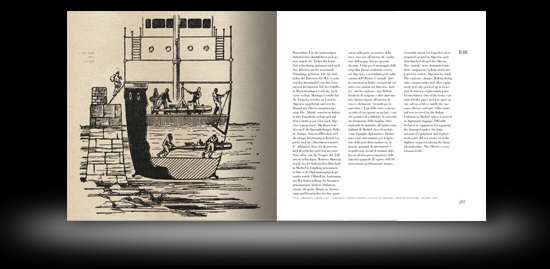
Page 358-359 – contemporary illustration of SLC missions starting from the “Olterra” in the Bay of Gibraltar (1942 and 1943).
 “The References” 1930’s-1940’s at a glance:
“The References” 1930’s-1940’s at a glance:
33 Vintage Panerai watches, history, instruments and straps of the 1930’s-1940’s. Featured References: 2533, 3646, the Mare Nostrum chronograph and compasses.
26 x 26 cm, 696 pages, trilingual (German, Italian and English language in one book), 19 database charts, 383 illustrations, including rare historic photos from the 2nd World War, hardback jacket, slipcase.
Visit our bookstore and enjoy reading soon!
A look into our book “The References” 1950’s-1960’s
by Volker on May.17, 2025, under Allgemein
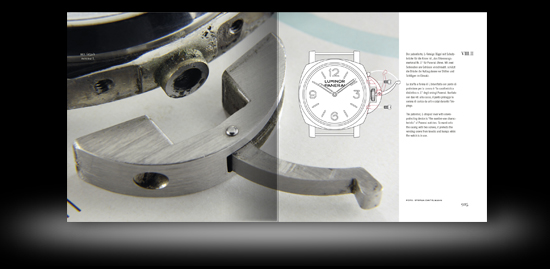
Page 924-925 – the patented, L-shaped lever with crown-protecting device of a Ref. 6152/1.
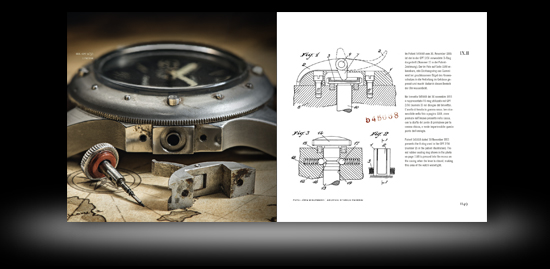
Page 1148-1149 – patent 545668 (dated 30 November 1955) presents the O-ring used in the GPF 2/56.
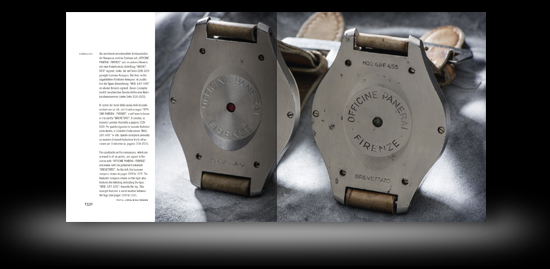
Page 1332-1333 – the casebacks on the compasses, which are screwed in at six points, ar signed in the center with „OFFICINE PANERAI – FIRENZE“ and below with the patented trademark „BREVETTATO“. The Radiomir compass on the right also features the „MOD. G.PF. 4/55“.
 “The References” 1950’s-1960’s at a glance:
“The References” 1950’s-1960’s at a glance:
37 Vintage Panerai watches from the 1950’s to 1960’s. Featured References: 6152, 6154, 6152/1, GPF 2/56 and modified References, compasses and depth gauges followed by an overview of the straps and buckles used in this era.
26 x 26 cm, 696 pages, trilingual (German, Italian and English language in one book), 27 database charts, 353 illustrations, including rare historic photos from Italian and Egyptian frogmen, hardback jacket, slipcase.
Visit our bookstore and enjoy reading soon!
Restart after the end of the Second World War
by Volker on May.09, 2025, under Allgemein
What brought about the demand for new and improved diver’s watches in Italy after the end of the Second World War? The answer to this question is inextricably intertwined with the history of the maritime special units, whose transformation from the Mezzi d’Assalto of the Decima MAS to the COMSUBIN took many years.
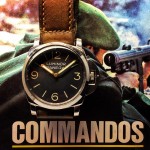 From 1947 to 1951, various divisions and bases were established, restructured and merged, finally settling on COMSUBIN (Comando Subacquei ed Incursori) in 1961. Varignano near La Spezia, headquarters of the COMSUBIN and, as of 1952, was and still is the base for the Scuola Incursori. One of the instructors in the 1950’s was Emilio Barberi M.O.V.M., shown on page 716 (MT explosive boat veteran of the mission against Souda Bay, March 1941, see also page 108-109 in chapter II.I). Read more in the intro of “The References” 1950’s-1960’s on page 705-719. These maritime special units were set up during the same period that Guido Panerai & Figlio was producing watches with the References 6152, 6154, 6152/1 and GPF 2/56, which are documented in chronological order in chapters VI to X. Compasses and depht gauges from these years are following in chapter XI, straps and buckles are closing this second volume of “The References” in chapter XII. Find an overview of all chapters in this book below:
From 1947 to 1951, various divisions and bases were established, restructured and merged, finally settling on COMSUBIN (Comando Subacquei ed Incursori) in 1961. Varignano near La Spezia, headquarters of the COMSUBIN and, as of 1952, was and still is the base for the Scuola Incursori. One of the instructors in the 1950’s was Emilio Barberi M.O.V.M., shown on page 716 (MT explosive boat veteran of the mission against Souda Bay, March 1941, see also page 108-109 in chapter II.I). Read more in the intro of “The References” 1950’s-1960’s on page 705-719. These maritime special units were set up during the same period that Guido Panerai & Figlio was producing watches with the References 6152, 6154, 6152/1 and GPF 2/56, which are documented in chronological order in chapters VI to X. Compasses and depht gauges from these years are following in chapter XI, straps and buckles are closing this second volume of “The References” in chapter XII. Find an overview of all chapters in this book below:
Chapter VI = Reference 6152
(featuring three different watches on page 720-781)
Chapter VII = Reference 6154
(featuring five different watches on page 782-867)
Chapter VIII = Reference 6152/1 with Rolex movements
(featuring fourteen different watches on page 868-1057)
Chapter IX = GPF 2/56
(featuring five different watches on page 1058-1161)
Chapter X = Modified References with Angelus movements
(featuring ten different watches on page 1162-1313)
Chapter XI = Compasses and depth gauges
(featuring fifteen different instruments on page 1314-1367)
Chapter XII = Straps and buckles
(various straps and pin buckles on page 1368-1387)
“The References” books are in stock and ready for shipping – just visit our bookstore and enjoy reading! [Ralf Ehlers & Volker Wiegmann]
Missions of the Egypt frogmen
by Volker on May.07, 2025, under Allgemein
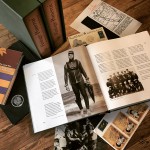 The Red Sea, the Straits of Tiran, the Gulf of Aqaba, even the shores of Dakar (Senegal) and Abidjan (Ivory Coast) – target zones of the Egypt frogmen during the Suez Crisis, the Six-Day War and the Yom Kippur War.
The Red Sea, the Straits of Tiran, the Gulf of Aqaba, even the shores of Dakar (Senegal) and Abidjan (Ivory Coast) – target zones of the Egypt frogmen during the Suez Crisis, the Six-Day War and the Yom Kippur War.
Not very much has been ever published before about missions against enemy ports, ships and oil platforms during the conflicts between Egypt and Israel. In the mid-50’s, both Egyptian and Israeli special forces attended separate training courses in Italy to learn the skills for underwater missions from their Italian instructors. After our search for historical documents and with the support of a high decorated Egypt frogmen veteran we were able to put a spotlight on some of the missions carried out decades ago.
Read the historical background on watches and instruments from Guido Panerai & Figlio used by the Egypt frogmen in chapter VII and IX of “The References” 1950’s-1960’s (second volume), accompanied with rare historic photos (page 794-795 shown in the coffee table shot above). The new “The References” books (two volumes with 696 pages each) can be ordered only in our bookstore. Enjoy reading!
“Luminor Panerai” Depth Gauge
by Volker on Apr.28, 2025, under Allgemein
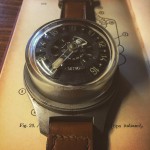 Compasses and depth gauges made by Guido Panerai & Figlio are featured in several versions (with “Radiomir” and “Luminor” luminous material) in chapter XI of the second volume of our book “The References”.
Compasses and depth gauges made by Guido Panerai & Figlio are featured in several versions (with “Radiomir” and “Luminor” luminous material) in chapter XI of the second volume of our book “The References”.
Chapter XI.I is featuring compasses from Guido Panerai & Figlio. Five different models are featured from page 1320 to 1333. Three with “Radiomir”, two with “Luminor”. Chapter XI.II is featuring depth gauges from Guido Panerai & Figlio, similiar to the instrument which can be seen in the photo. Ten different models are featured from page 1334 to 1367. Six with “Radiomir”, aimed to 7, 30, 35 (2 versions: adjustable and non-adjustable dial), 50 and 60 meters. Four with “Luminor”, aimed to 7, 15, 16, 30 and 40 meters.
Click on the link to see the video of a pressure test on a “Luminor Panerai” 16 meter depth gauge: Vintage_Panerai_Depth_Gauge. Click on the link to see the pressure release – “the surfacing” in this video: Vintage_Panerai_depth_gauge_surfacing
“Luminor Panerai” Compass
by Volker on Apr.22, 2025, under Allgemein
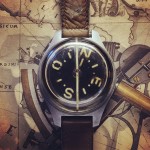 Compasses and depth gauges made by Guido Panerai & Figlio are featured in several versions (with “Radiomir” and “Luminor” luminous material) in chapter XI of the second volume of our book “The References”.
Compasses and depth gauges made by Guido Panerai & Figlio are featured in several versions (with “Radiomir” and “Luminor” luminous material) in chapter XI of the second volume of our book “The References”.
Chapter XI.I is featuring compasses from Guido Panerai & Figlio. Five different models are featured from page 1320 to 1333. Three with “Radiomir”, two with “Luminor”, similiar to the instrument which can be seen in the photo.
Our book “The References” 1950’s-1960’s is featuring several historic photos in which such compasses from Guido Panerai & Figlio can be spotted on page 794, 1064, 1068, 1316, 1318.
Spot on: vintage straps and buckles
by Volker on Apr.15, 2025, under Allgemein
 In both volumes of our new book “The References” we dedicated one chapter for straps and buckles. Highly collectible and sought after straps and buckles dating back to the Second World War are featured in chapter V.
In both volumes of our new book “The References” we dedicated one chapter for straps and buckles. Highly collectible and sought after straps and buckles dating back to the Second World War are featured in chapter V.
The photo on the left shows two rare buckles from the Second World War era in different conditions. Because of their shape, these type of buckles were nicknamed “Bottle Opener” by collectors. Information on “The References” 1930’s-1940’s (first volume) can be found here.
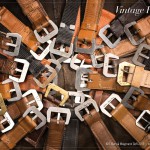 The famous GPF mod. Dep. buckles from the 1950’s-1960’s are featured in chapter XII, together with an overview of different straps made for Guido Panerai & Figlio watches and instruments.
The famous GPF mod. Dep. buckles from the 1950’s-1960’s are featured in chapter XII, together with an overview of different straps made for Guido Panerai & Figlio watches and instruments.
The photo on the left shows different buckles and straps. Information on “The References” 1950’s-1960’s (second volume) can be found here.
Our book “The References” is in stock (both volumes) and can be ordered in our bookstore. Learn how to order in our FAQ section.
Enjoy reading!
[Ralf Ehlers & Volker Wiegmann]
26 March 1941 – today in history…
by Volker on Mar.26, 2025, under Allgemein
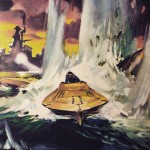 During the winter of 1940-1941 the human torpedo attacks were suspended, at least until the following spring. A detachment of MT explosive boats was based in the Dodecanese, where it trained under the command of Vittorio Moccagatta on the island of Leros with the objective of attacking Souda Bay and the British traffic to Greece.
During the winter of 1940-1941 the human torpedo attacks were suspended, at least until the following spring. A detachment of MT explosive boats was based in the Dodecanese, where it trained under the command of Vittorio Moccagatta on the island of Leros with the objective of attacking Souda Bay and the British traffic to Greece.
Vittorio Moccagatta was ordered back to Italy on 23 January 1941, where he became the commander of the 1st MAS Flotilla in La Spezia. His suggestions to the Italian naval commando assumed in the result that the 1st MAS Flotilla became the 10th MAS Flotilla – the Decima MAS – on 15 March 1941, which was divided into two divisions from that time:
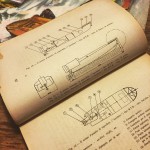 The surface division – Mezzi di Superficie – under the command of Capitano di Corvetta Giorgio Giobbe with a fleet of various explosive boats (category MT, MTM shown by the historic sketches on the left, MTR, MTS, MTMS, SMA, MTL) and motorboats for sabotage operations.
The surface division – Mezzi di Superficie – under the command of Capitano di Corvetta Giorgio Giobbe with a fleet of various explosive boats (category MT, MTM shown by the historic sketches on the left, MTR, MTS, MTMS, SMA, MTL) and motorboats for sabotage operations.
The underwater division – Mezzi Subacquei – under the command of Capitano di Corvetta Junio Valerio Borghese operated the diving School in Livorno, the SLC training base at Bocca di Serchio, the remaining transport submersibles Scirè and Ambra and the frogmen of the “Gruppo Gamma”. On a side note, in early 1941, the two initial transport submersibles for SLC devices, Iride and Gondar, were already lost with the failure of „Operazione G.A.1“ and „Operazione G.A.2“ in August and September 1940.
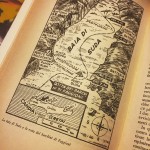 On 26 March 1941, the surface division – Mezzi di Superficie – of the Decima MAS achieved initial successes: six MT-type explosive boats broke through the blockades in Souda Bay (Crete, see historic map on the left) damaging the heavy cruiser York and the tanker Pericles.
On 26 March 1941, the surface division – Mezzi di Superficie – of the Decima MAS achieved initial successes: six MT-type explosive boats broke through the blockades in Souda Bay (Crete, see historic map on the left) damaging the heavy cruiser York and the tanker Pericles.
During the night, the servicemen Luigi Faggioni (commander), Angelo Cabrini, Tullio Tedeschi, Alessio De Vito, Lino Beccati and Emilio Barberi) were transported to the target area aboard the destroyers Crispi and Sella. These two destroyers were equipped with electrically powered cranes for placement of the MT-type explosive boats on the water, which was carried out in just a few minutes, ten miles from Souda’s entrance, at 2330 hours on 25 March 1941. Unnoticed by the enemy, the MT-type explosive boats managed to cross three barricades and reached their targets in the early hours of the morning of 26 March 1941.
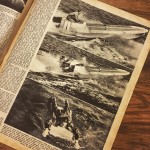 Two MT-type explosive boats attacked the York (the pilots abandoned their boats 80 meters before hitting the ship, see historic photos on the left). Another two MT-type explosive boats attacked the Pericles. Commander Faggioni tried to hit the Coventry but his boat missed the cruiser and exploded on the coast. The sixth MT-type explosive boat missed its target too, but remained intact and was captured by the British. All six pilots of the explosive boats survived the attack and became POW.
Two MT-type explosive boats attacked the York (the pilots abandoned their boats 80 meters before hitting the ship, see historic photos on the left). Another two MT-type explosive boats attacked the Pericles. Commander Faggioni tried to hit the Coventry but his boat missed the cruiser and exploded on the coast. The sixth MT-type explosive boat missed its target too, but remained intact and was captured by the British. All six pilots of the explosive boats survived the attack and became POW.
Read more about the timeline of the missions during the Second World War in chapter II.I on page 106-146. Vittorio Moccagatta is featured on page 112-113, the attack in Souda Bay is featured on page 108-109.
Reading a frogman’s battle report…
by Volker on Mar.19, 2025, under Allgemein
One of the rarest historical documents which we came across during the research of our book “History2”: a handwritten battle report of a frogmen mission at the Pomeranian coast, dated April 3rd, 1945.
 Documents from the last weeks of the Second World War are today, without a doubt, very hard to find – if existing after more than 70 years at all… With the support of the family of the German “Kampfschwimmer”, who once wrote this report after he returned safely from the combat zone, we were able to include this battle report (page 672-673 shown on the coffee table shot on the left) in chapter VII of “History2” (featuring the chapters V-IX with a total of 480 pages).
Documents from the last weeks of the Second World War are today, without a doubt, very hard to find – if existing after more than 70 years at all… With the support of the family of the German “Kampfschwimmer”, who once wrote this report after he returned safely from the combat zone, we were able to include this battle report (page 672-673 shown on the coffee table shot on the left) in chapter VII of “History2” (featuring the chapters V-IX with a total of 480 pages).
Interesting details in his handwritten battle report are the times which he mentioned aside other details, all easily readable on the sandwich dial of the Ref. 3646 / Type D (with 5 minute markers / indices) he was wearing during the mission: He wrote down 21:50, 23:30, 23:45, 23:50-0:30 and finally 2:05 AM – the moment he left the waters – after 4:15 hours trying to attack the Wollin railroad bridge together with a group of four frogmen from the “Einsatzgruppe Keller”, towing two mines thru the waters of the Dievenow.
One of these five frogmen is featured in our book “History1”. Several pages of his diary are published in chapter II, where he wrote down what happened during the frogmen attack of the Gristow bridge at the Pomeranian coast (page 134-143).
 Read more on further rare documents which helped us to capture the history behind the Ref. 3646 / Type D “Kampfschwimmer” watch, shown on the coffee table shot on the left here. Photos from the years 1944 and 1945 showing this watch on the frogman’s wrist, as well as his identification papers and travel documents issued in Venice, helped us to reconstruct the route he took to the mission grounds.
Read more on further rare documents which helped us to capture the history behind the Ref. 3646 / Type D “Kampfschwimmer” watch, shown on the coffee table shot on the left here. Photos from the years 1944 and 1945 showing this watch on the frogman’s wrist, as well as his identification papers and travel documents issued in Venice, helped us to reconstruct the route he took to the mission grounds.
Obviously his handwritten battle report never reached the headquarters but somehow he managed to keep it safe for his personal records, giving us today, more than 70 years later, a detailed inside view on a mission he carried out together with four frogmen at the Eastern Front in April 1945…
Our two “History” books can be ordered only in our bookstore.
Enjoy reading stories behind these watches!
[Ralf Ehlers & Volker Wiegmann]

